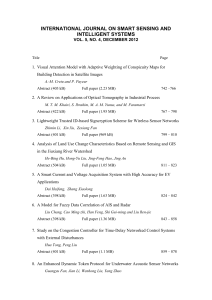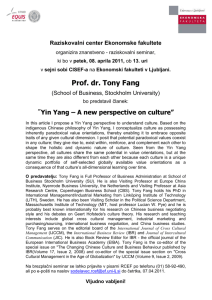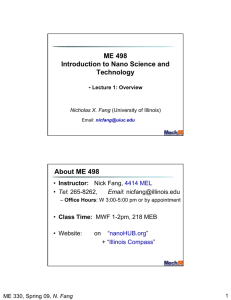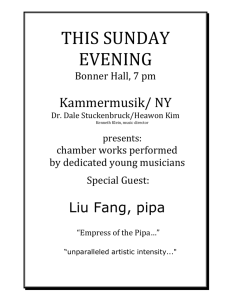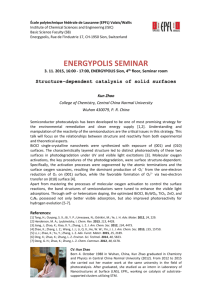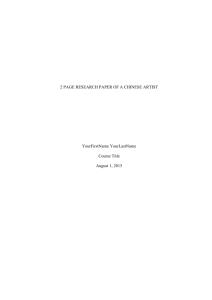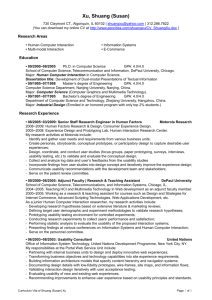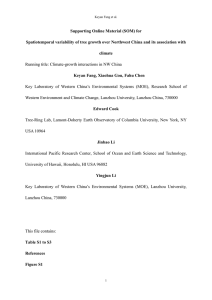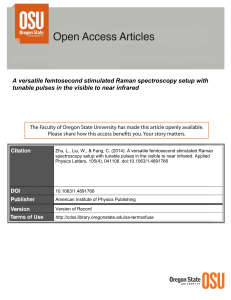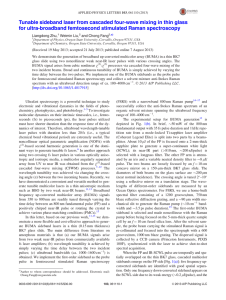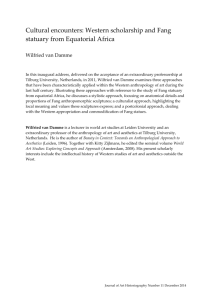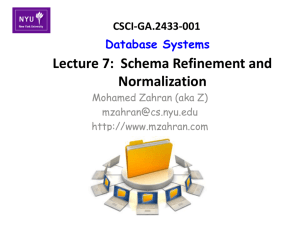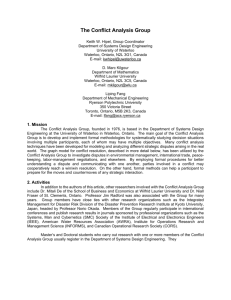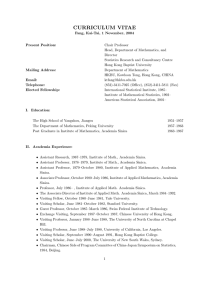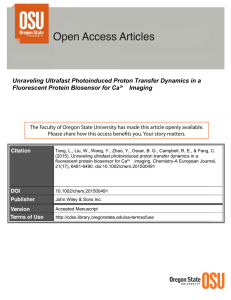Seminar_Abstract_MSU_CF
advertisement
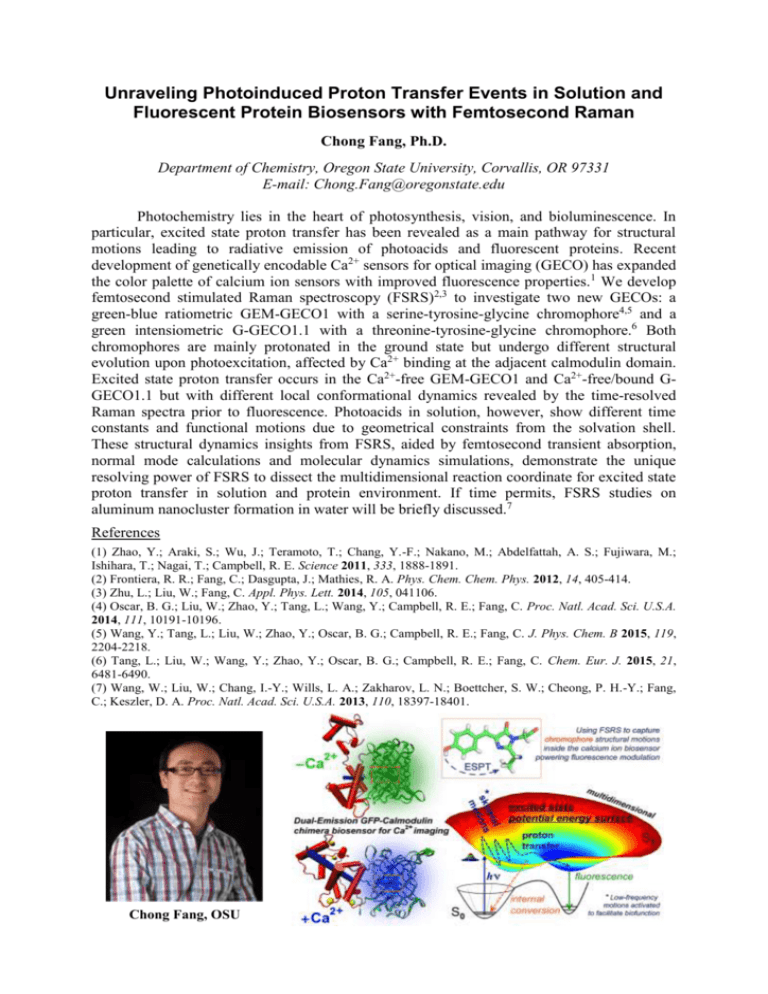
Unraveling Photoinduced Proton Transfer Events in Solution and Fluorescent Protein Biosensors with Femtosecond Raman Chong Fang, Ph.D. Department of Chemistry, Oregon State University, Corvallis, OR 97331 E-mail: Chong.Fang@oregonstate.edu Photochemistry lies in the heart of photosynthesis, vision, and bioluminescence. In particular, excited state proton transfer has been revealed as a main pathway for structural motions leading to radiative emission of photoacids and fluorescent proteins. Recent development of genetically encodable Ca2+ sensors for optical imaging (GECO) has expanded the color palette of calcium ion sensors with improved fluorescence properties.1 We develop femtosecond stimulated Raman spectroscopy (FSRS)2,3 to investigate two new GECOs: a green-blue ratiometric GEM-GECO1 with a serine-tyrosine-glycine chromophore4,5 and a green intensiometric G-GECO1.1 with a threonine-tyrosine-glycine chromophore.6 Both chromophores are mainly protonated in the ground state but undergo different structural evolution upon photoexcitation, affected by Ca2+ binding at the adjacent calmodulin domain. Excited state proton transfer occurs in the Ca2+-free GEM-GECO1 and Ca2+-free/bound GGECO1.1 but with different local conformational dynamics revealed by the time-resolved Raman spectra prior to fluorescence. Photoacids in solution, however, show different time constants and functional motions due to geometrical constraints from the solvation shell. These structural dynamics insights from FSRS, aided by femtosecond transient absorption, normal mode calculations and molecular dynamics simulations, demonstrate the unique resolving power of FSRS to dissect the multidimensional reaction coordinate for excited state proton transfer in solution and protein environment. If time permits, FSRS studies on aluminum nanocluster formation in water will be briefly discussed.7 References (1) Zhao, Y.; Araki, S.; Wu, J.; Teramoto, T.; Chang, Y.-F.; Nakano, M.; Abdelfattah, A. S.; Fujiwara, M.; Ishihara, T.; Nagai, T.; Campbell, R. E. Science 2011, 333, 1888-1891. (2) Frontiera, R. R.; Fang, C.; Dasgupta, J.; Mathies, R. A. Phys. Chem. Chem. Phys. 2012, 14, 405-414. (3) Zhu, L.; Liu, W.; Fang, C. Appl. Phys. Lett. 2014, 105, 041106. (4) Oscar, B. G.; Liu, W.; Zhao, Y.; Tang, L.; Wang, Y.; Campbell, R. E.; Fang, C. Proc. Natl. Acad. Sci. U.S.A. 2014, 111, 10191-10196. (5) Wang, Y.; Tang, L.; Liu, W.; Zhao, Y.; Oscar, B. G.; Campbell, R. E.; Fang, C. J. Phys. Chem. B 2015, 119, 2204-2218. (6) Tang, L.; Liu, W.; Wang, Y.; Zhao, Y.; Oscar, B. G.; Campbell, R. E.; Fang, C. Chem. Eur. J. 2015, 21, 6481-6490. (7) Wang, W.; Liu, W.; Chang, I.-Y.; Wills, L. A.; Zakharov, L. N.; Boettcher, S. W.; Cheong, P. H.-Y.; Fang, C.; Keszler, D. A. Proc. Natl. Acad. Sci. U.S.A. 2013, 110, 18397-18401. Chong Fang, OSU
